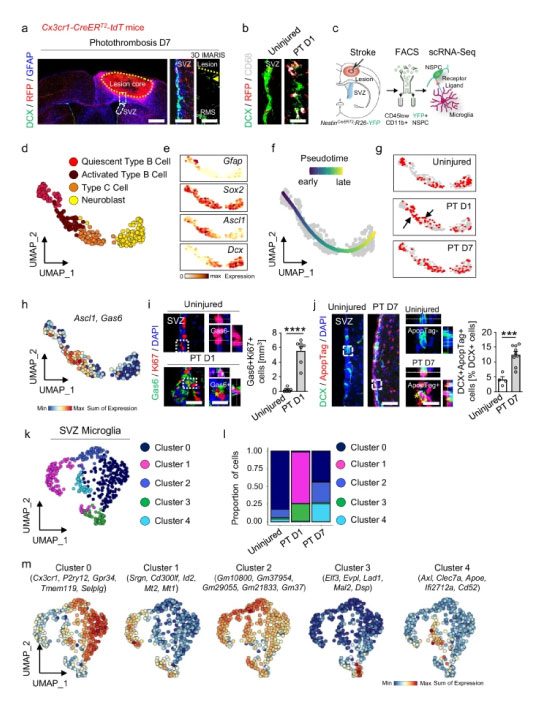Role of microglia in brain repair after stroke
Nath S, Martínez Santamaría JC, Chu YH, Choi JS, Conforti P, Lin JD, Sankowski R, Amann L, Galanis C, Wu K, Deshpande SS, Vlachos A, Prinz M, Lee JK, Schachtrup C. Interaction between subventricular zone microglia and neural stem cells impacts the neurogenic response in a mouse model of cortical ischemic stroke. Nat Commun. 2024 Oct 24;15(1):9095.
A recent study has uncovered insights into how brain immune cells, called microglia, interact with neural stem cells (NSCs) in response to stroke and impact the brain's ability to repair itself. Microglia, present in the subventricular zone (SVZ), are critical for modulating neurogenesis which is essential for recovery following brain injury.
When stroke occurs, the SVZ microenvironment changes drastically, causing microglia to become highly activated. This activation leads to a shift in microglial behavior, with microglia clustering and expressing markers associated with inflammation and cell phagocytosis.
Surprisingly, the study found that these stroke-activated microglia were not only failing to support NSCs but also actively hindering neurogenesis by engulfing newly formed neuroblasts, the early-stage neurons essential for brain repair.

This study featured the Anti-P2ry12 polyclonal antibody (HPA014518) from Atlas Antibodies.
The study specifically tracked microglial activation using the P2ry12 protein as a marker. This protein, low in healthy SVZ microglia, became highly expressed shortly after ischemic injury, indicating a reactive state. Through single-cell RNA sequencing and immunohistochemistry, researchers revealed that stroke-associated microglia began to engage in heightened ligand-receptor interactions with NSCs, particularly through an ApoE-Lrp8 pathway.
This interaction was found to be associated with neuroblast phagocytosis, meaning that the activated microglia were consuming rather than supporting the cells needed for brain regeneration. Interestingly, manipulating this interaction, for example, by blocking specific microglial pathways, could help reduce microglial-induced neuroblast phagocytosis, thereby enhancing the neurogenic response.
These findings could open doors to new therapies that support endogenous brain repair by targeting microglial behavior, offering hope for more effective stroke recovery treatments in the future.
